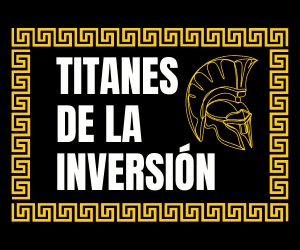Learn all about Francis Chou, an investment genius, his winning strategy, and the firm Chou Associates. Transform your financial approach today.
Home
»
Investments
»
HOW FIXED INCOME ETFS WORK
Fixed income ETFs offer an innovative and accessible way to invest in bonds. Learn about their advantages, popular options, and associated risks.

Advantages Over Direct Investments
In the world of investments, fixed income ETFs emerge as a modern solution to acquiring bonds without the stress of direct purchases. But why choose them over direct investment? Let’s explore some of their compelling advantages.
Liquidity and Flexibility
Fixed income ETFs offer levels of liquidity that individual bonds cannot match. These instruments allow investors to easily buy and sell through stock markets, similar to stocks. While selling a specific bond can be as easy as trying to sell a car to a fish, ETFs simplify the process.
Instant Diversification
A single ETF can contain a collection of diverse bonds, providing immediate diversification—a dream come true for any savvy investor wanting everything in one package. Instead of purchasing multiple individual issues, the ETF does the heavy lifting, reducing individualized risk.
Lower Costs
Compared to trading individual bonds, the management costs of ETFs are relatively low. This is because due diligence is not required for each bond separately. Fixed income ETFs remove the need to be a financial Sherlock to discover which bond might be worth following.
Price Transparency
Unlike individual bonds whose valuation is as clear as a Tolkien mystery, ETFs provide visibility on prices by being listed on the stock exchange. The information is clear, available, and less prone to market speculation.
Professional Management
The management of bonds within an ETF is carried out by experienced professionals who eat, breathe, and sleep market analysis. This means you can relax while the heavy brains do all the technical work, similar to hiring someone to solve a Rubik’s cube while you enjoy a cocktail.
Accessibility
Finally, ETFs make investing accessible to the average person, allowing entry with small amounts. Whether you want to invest an entire salary or the change you find between sofa cushions, ETFs welcome you.
Examples of Popular ETFs
For those looking to dive into the world of fixed income ETFs, knowing some popular examples is like having a treasure map before setting out on an adventure. Check out these ETFs that have captured the attention of investors worldwide.
Vanguard Total Bond Market ETF (BND)
This titan in the bond realm offers exposure to a broad range of U.S. market bonds. It combines government, corporate, and mortgage-backed securities. It's the 'Swiss Army knife' of fixed income ETFs.
iShares iBoxx $ Investment Grade Corporate Bond ETF (LQD)
If keeping up with movements in U.S. corporate bonds is your idea of fun, LQD is your pick. It invests in investment-grade corporate bonds, providing diversification across many industries. It's like going to a party where everyone is wealthy and wearing impeccable suits.
SPDR Bloomberg Barclays High Yield Bond ETF (JNK)
Feeling adventurous? JNK invests in high-yield bonds (also known as junk bonds). In exchange for a higher level of risk, its potential rewards are the syrup for bold investors. This ETF is the financial equivalent of going on a roller coaster: thrilling and somewhat reckless.
Schwab U.S. Aggregate Bond ETF (SCHZ)
For those seeking simplicity and stability, SCHZ is a solid choice. It offers a similar approach to BND but at a slightly lower cost. It's the vanilla ice cream of ETFs: classic and reliable, without the risk of surprises.
Risks Involved
Like anything in life, fixed-income ETFs do not come without their caveats. Those contemplating this type of investment should be aware of the potential risks involved before taking the plunge.
Interest Rate Risk
A familiar foe for fixed-income investors is the changing interest rate environment. When rates rise, bond prices tend to fall. So, if the Federal Reserve decides to play 'up and down', the value of your ETF might unfortunately fluctuate.
Credit Risk
Depending on the quality of bonds included in an ETF, credit risk is always present. If the issuing companies or entities fail to make payments, the value of your investment could face an unpleasant reality. It's like lending money to your cousin with a questionable repayment history; it can go very well or very poorly.
Liquidity Risk
Although ETFs are traded like stocks, some might have less liquidity than others, particularly those with less common or specialized bonds in their portfolio. So, if one day you decide to sell, and the market isn't favorable, you might feel stuck like when you bite into a cookie full of raisins thinking they're chocolate chips.
Inflation Risk
Inflation can erode the purchasing power of your fixed-income investments. It's like discovering your fortune cookie predicted a decade of inflated prices at your favorite grocery store. You came to invest, not to become a price historian.
The Risk of False Confidence
Finally, the false sense of security that ETFs provide can lead novice investors to overlook thorough analysis. As you venture into fixed-income ETFs, remember Warren Buffett's words: "Never invest in a business you cannot understand." In this context, know the ETF's composition and strategy well.
YOU MAY ALSO BE INTERESTED




